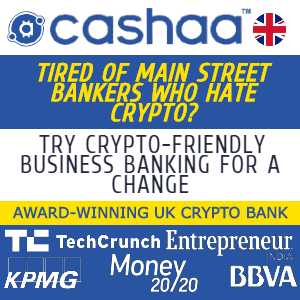Ned Scott, co-founder of Steemit, says he plans to make the platform’s in-built incentive structures and censorship resistance interoperable with the rest of the internet. He forecasts that traditional blogs and publishers will adopt Steem to secure and incentivize their user’s content. Scott told me:
“The Blockchain is a completely shareable and immutable database, which is going to allow Steem to support many websites as [a] comments widget, much like Disqus, but with a shared network effect for conversations.”
Steemit, a social media platform running on Blockchain, set out to fix two main issues that we see in social networking sites such as Facebook, Twitter and Reddit. It’s designed to (1) enable content creators to profit from their creativity, and (2) to secure the freedom of people to share ideas without risk of censorship.
Facebook’s revenue hit $27 billion in 2016. The current business model of social media, however, doesn’t extend profits to the creators of the content. The users on networking sites are there if not to churn out free content, then to be a product to sell to advertisers.
The centralized structure of the platforms is also susceptible to censorship. Powerful actors such as governments can exert pressure to block users and content they don’t like. A case in point follows the sharp focus that has followed Facebook after the 2016 US presidential elections.
Many in the US political establishment and the mainstream media hold the opinion that Hillary Clinton lost to Donald Trump due to “fake news” that flooded social media sites during the campaign period. This has led to calls for censorship.
In response, Mark Zuckerberg promised in mid-October to help crack down on the “fake news” problem. Despite the fact that it isn’t clear who will decide what criteria defines fake news.
Steemit’s promise
While Steemit mimics Facebook, Reddit and Medium, it is different. It compensates those who create the content. Scott said:
“Steemit is a social network, like Reddit, but with the best content on earth. And it’s also got cryptocurrency involved called STEEM — and if you make comments that people enjoy, you may earn some — just for commenting.”
It also protects its users from censorship. Because it is decentralized, powerful actors can not block users or messages they don’t like.
Scott and Dan Larimer, Steemit’s other founder, are no strangers to Blockchain. They also founded BitShares, a Blockchain platform on which they created digital assets or BitAssets such as BitUSD.
Will Steemit fail?
Steemit isn’t the first Blockchain service that has sought to help content creators receive payment for the content they publish on social media. Zapchain and ChangeTip also tried. Zapchain shut down in August 2016, and ChangeTip followed in October. Both were in operation for about two years, but ultimately didn’t see enough uptake to survive.
Scott believes Steemit’s approach is different enough that it will avoid facing the same fate. He points out that Steemit has removed responsibility for payment from consumers of content. A consumer need only upvote, share or comment. An algorithm calculates the amount earned by each creator. Scott:
“Steemit runs on a Blockchain specifically designed for supporting social media and the platform’s content creators — because of its inherent rewards for starting discussion, there will always be an interested user base.”
Source of earnings
Steemit’s own native cryptocurrency token, STEEM, is used to pay content creators. The funds come from mining rewards.
How much you earn from a post or comment depends on how many people upvote it. The more votes, the higher the fees you earn. The votes don’t carry equal influence, though. From the Steemit white paper:
“Steem operates on the basis of one-STEEM, one-vote. Under this model, individuals who have contributed the most to the platform, as measured by their account balance, have the most influence over how contributions are scored.”
STEEM coins are denominated in US dollars for ease of use. The coins are also traded on the market at several exchanges.
The Challenge
Steemit, like any other platform, has downsides. For instance, people can use bots or register multiple accounts to exaggerate the number of votes their post and comments get. Scott explains, however, that the system works on the concept of stake-weighted voting. This prevents users from gaming it, and incentivizes large STEEM holders to vote for discussion that brings real value to the community.
He says:
“Steemit uses an open database, also called Steem, and because it’s open anyone can write their own programs or applications to use it. The good thing is that the system was built to be a robust economic platform, and people and bots cannot adjust the economics of rewards just by adding more votes or accounts.”







